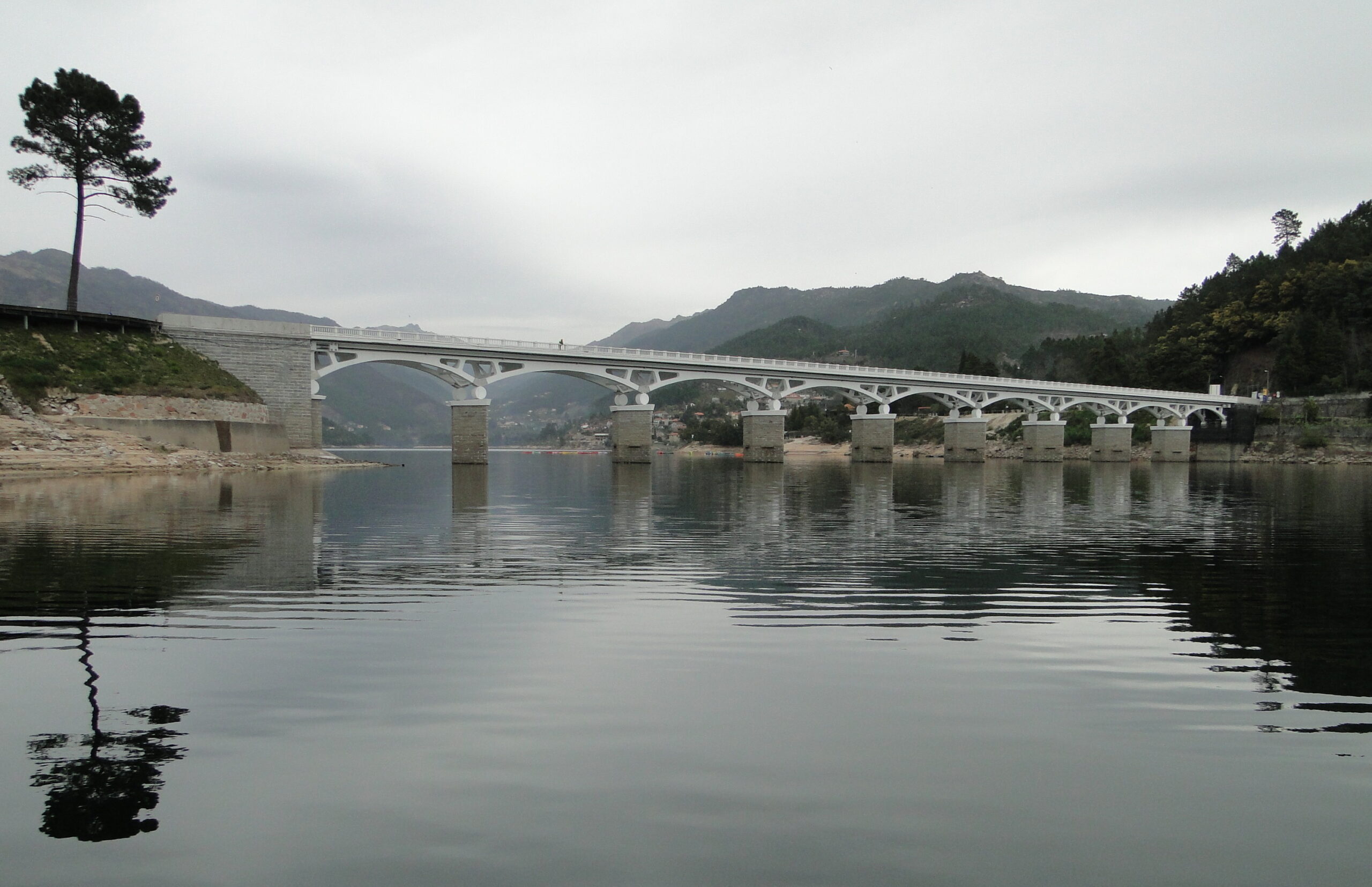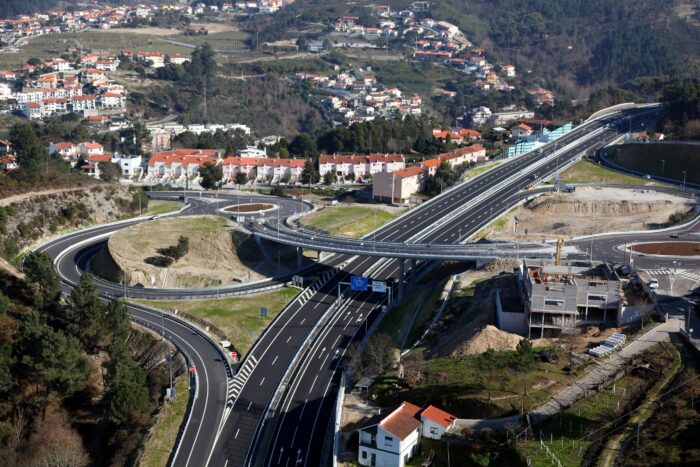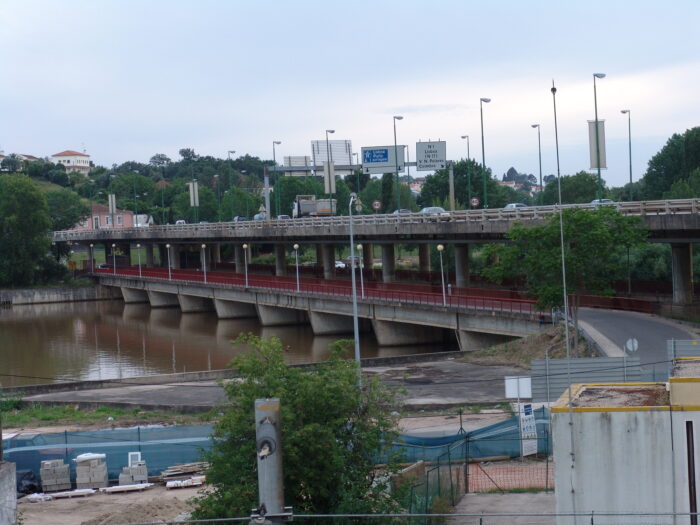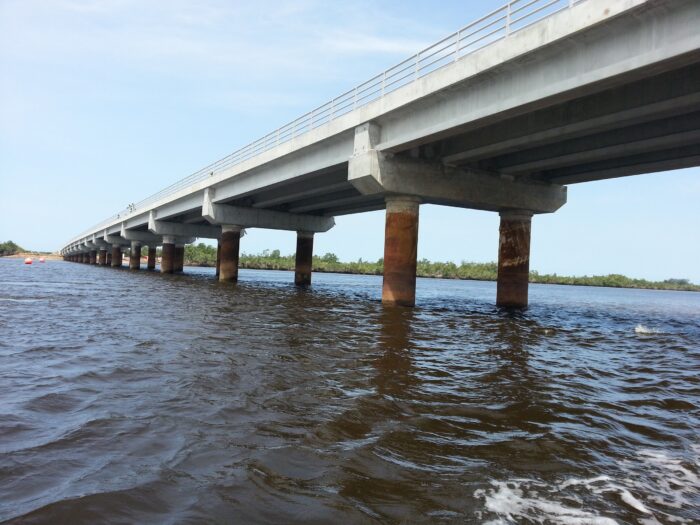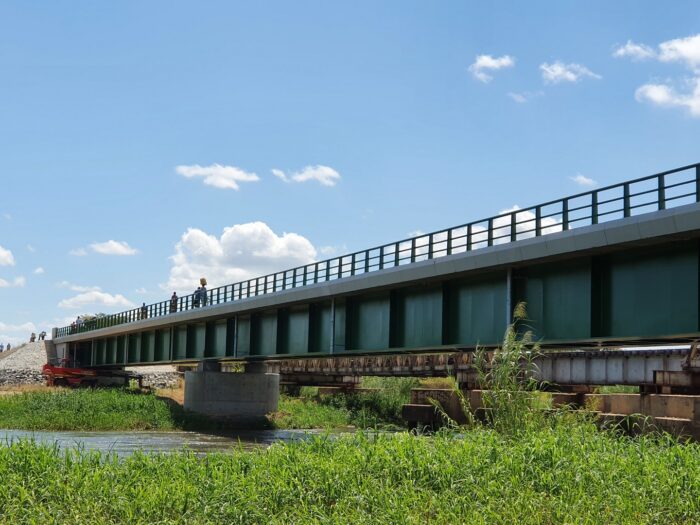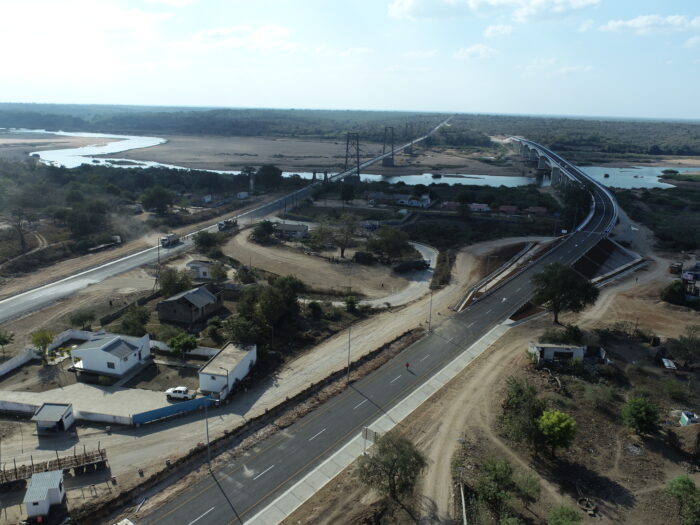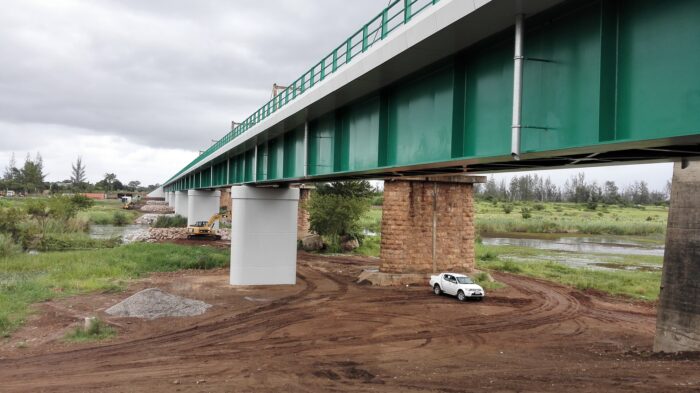Caldo river’s Bridge over Caniçada artificial lake
- Location: Gerês, Portugal
- Solution: Bridges, Asset Management
- Type: Road bridges, Rehabilitation
- Promoter: Infraestruturas de Portugal SA (former EP – ESTRADAS DE PORTUGAL, E.P.E.)
- Client: Infraestruturas de Portugal SA (former EP – ESTRADAS DE PORTUGAL, E.P.E.)
- Scope: Reinforcement and Rehabilitation Design, Safety Assessment, Anomaly Mapping, Materials Testing, Visual Inspections and Underwater Inspections
- Area: 1 691.5 m2 deck surface
- Project: 2005/2006
- Construction: 2009
- Photography: Teixeira Duarte
- Contractor: Teixeira Duarte
- Dimension: 199m long, 23m max span, 70m highest pier
- See on Google Maps
Caldo river’s Bridge over Caniçada artificial lake
- Location: Gerês, Portugal
- Solution: Bridges, Asset Management
- Type: Road bridges, Rehabilitation
- Promoter: Infraestruturas de Portugal SA (former EP – ESTRADAS DE PORTUGAL, E.P.E.)
- Client: Infraestruturas de Portugal SA (former EP – ESTRADAS DE PORTUGAL, E.P.E.)
- Scope: Reinforcement and Rehabilitation Design, Safety Assessment, Anomaly Mapping, Materials Testing, Visual Inspections and Underwater Inspections
- Area: 1 691.5 m2 deck surface
- Project: 2005/2006
- Construction: 2009
- Photography: Teixeira Duarte
- Contractor: Teixeira Duarte
- Dimension: 199m long, 23m max span, 70m highest pier
- Ver no Google Maps
The Caldo River bridge was designed in 1954 by Edgar Cardoso, a famous portuguese bridge engineer. The bridge allows the access to Peneda-Gerês National Park and replaced the old masonry bridges left submersed in the bottom of the valley, after the construction of the dam and artificial lake of Caniçada. Rainfall and humidity are high in this region throughout the entire year.
The crossing is 199m long and sub-divided into 19m+7x23m+19m spans. It is supported by very tall granite masonry piers (the tallest is 70m).
The concrete deck has variable height, achieved by two parallel reinforced concrete truss-beams with an elliptical arch design. The piers are made of granite masonry, performing a diamond hollow section with holes that balance the water level inside and outside the piers and, therefore, balancing the hydrostatic pressure over the element. Bearings are concrete cylindrical pendulums.
The bridge was in poor condition due to excessive deformation of bearings with plastic behaviour of the reinforcement, corrosion, delamination of concrete, insufficient concrete cover, structural cracking at the base and mid sections of the arches and web diagonals.
The main intervention to strengthen the platform included the fastening of external post-tension (active) applied in the top chord and anchored close to the abutments by a system that avoided local demolitions, major risks and total traffic interdiction to access Gerês. The beams were also repaired with CFRP sheets and inox steel plates in the arches’ base sections and web diagonals.
